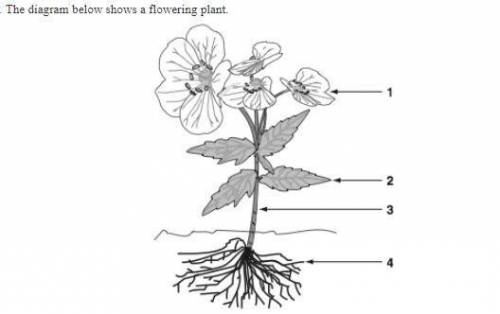

Answers: 1


Another question on Biology

Biology, 22.06.2019 22:20
Which of the following structures is a double layer of phospholipids with proteins? a: cytoplasm b: cell membrane c: ribosome d: cell wall
Answers: 2

Biology, 23.06.2019 01:00
Which statement is a correct description of the processes of respiration and transpiration in a plant? question 7 options: transpiration is when the plant loses water through its leaves. respiration is when the plant breaks down the sugar in its cells to release energy. transpiration is when the plant pulls water into its roots. respiration is when the plant breathes. transpiration is when the plant grows over time. respiration is when the plant breaks down the sugar in its roots. transpiration is when the plant produces buds. respiration is when the plant dies.
Answers: 1

Biology, 23.06.2019 03:00
4) this is any functional structure within the confines of a cell; literally a. "small organ; " it usually has a membrane-based structure 5) this is a tiny fluid-filled cavity in the cytoplasm. it can be used for storage of biochemicals. 6) this is a two-part process that ends in the assembly of proteins at the ribosomes within cells. the first part, transcription, begins in the nucleus, when the dna code is transferred to mrna. the second part, translation, takes place at the ribosomes, where both mrna and trna work to assemble proteins. 7) these are singular, relatively long, whip-like organelles that many unicellular organisms use for motion. 9) this holds an organisms hereditary information. 10) energy stored in chemical bonds of molecules. - down 1) this kind of cell from a multicellular organism does not have a large central vacuole. 2) this organelle serves to process and package lipids and proteins in the cell. 3) this kind of cell has a large central vacuole and a cell wall. 8) chloroplast thylakoids are frequently stacked to form these disks. submit
Answers: 1

Biology, 23.06.2019 07:20
Can nonrenewable resources be used sustainably? a. yes, nonrenewable resources are always beneficial for the environment b. no, there are only negative effects of using nonrenewable resources c. no, there's a finite amount of nonrenewable resources d. yes, as long as use doesn't exceed availability is the correct answer d. yes, as long as use doesn't exceed availability
Answers: 1
You know the right answer?
thank you!
Identify (label) and explain the functions of each numbered plant organ in th...
Identify (label) and explain the functions of each numbered plant organ in th...
Questions


Mathematics, 08.11.2019 02:31


Mathematics, 08.11.2019 02:31

Social Studies, 08.11.2019 02:31



Spanish, 08.11.2019 02:31



Mathematics, 08.11.2019 02:31

Mathematics, 08.11.2019 02:31


French, 08.11.2019 02:31


English, 08.11.2019 02:31


History, 08.11.2019 02:31

Mathematics, 08.11.2019 02:31




